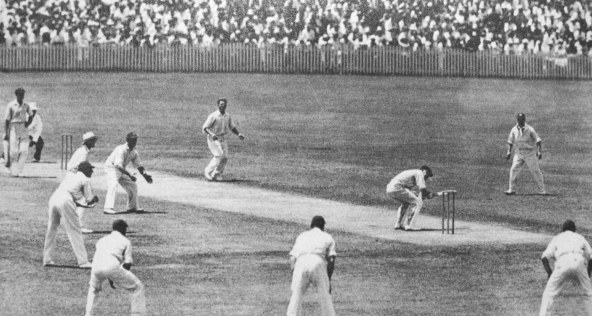
‘Whimsy’ columnist CLIVE WILLIAMS looks back at some of cricket’s scandals that weren’t, well, cricket!
ON the topic of cricket again, the controversial dismissal of English cricketer Jonny Bairstow in the second Ashes Test was clearly within the rules of the game, but many fans (particularly irate members of Lords) claim that it was not in “the spirit of the game”.

The controversy has since been exploited to scratch an itch in other areas of the England/Australia relationship – like republicanism. I note that King Charles has wisely kept out of it.
Anyway, this time I thought I would look at some past controversies.
The Bodyline Series (1932-1933) – England vs. Australia
THE bodyline series between England and Australia was a prime example of the game being played contrary to the spirit.
Seeking to counter the extraordinary batting prowess of Australian batsman Don Bradman, England devised a strategy that involved aiming the ball directly at the body of the batsman, instead of the traditional line and length.
This aggressive tactic, known as “leg theory”, resulted in a barrage of bouncers aimed at the batsman’s upper body, causing serious injuries and heated confrontations on the field. The hostile nature of the play drew criticism from players, officials, and the public, and led to significant changes in cricket laws and regulations.
The Underarm Bowling Incident (1981) – NZ vs. Australia

IN a highly controversial moment during a One-Day International match, Australia’s captain Greg Chappell instructed his younger brother, Trevor Chappell, to deliver the final ball of the match as an underarm delivery, rolling the ball along the ground instead of bowling it in the air.
With NZ requiring six runs off the last ball to tie the match, this underarm delivery ensured the ball could not be hit for a six, effectively sealing Australia’s victory.
The incident, although within the rules of the game, was widely condemned for its unsporting nature. The cricketing community and the public expressed outrage, prompting changes to the rules, specifically prohibiting underarm bowling in limited-overs matches.
Match-fixing scandals (1990s-2000s)
CRICKET’S darkest hour came with a series of match-fixing scandals that shook the sport’s foundations.
Several prominent players, including Hansie Cronje, Saleem Malik and Mohammad Azharuddin, were implicated in various match-fixing and spot-fixing controversies.
These individuals were found guilty of conspiring to influence the outcome of matches by accepting money from illegal bookmakers. The revelations shocked the cricketing world, eroding public trust and tarnishing the integrity of the game.
Cricket authorities responded by implementing strict anti-corruption measures, including the establishment of the International Cricket Council’s Anti-Corruption and Security Unit.
Sandpaper Gate (2018) – Australia vs. South Africa
DURING a Test match in South Africa, captain Steve Smith, vice-captain David Warner and young batsman Cameron Bancroft conspired to use sandpaper to alter the condition of the ball, aiming to gain an unfair advantage.
The incident was captured on camera and immediately sparked outrage among fans, players, and officials.
The trio faced disciplinary consequences, with Smith and Warner receiving one-year bans and Bancroft receiving a nine-month ban from international and domestic cricket.
The incident exposed a darker side of the Australian team’s win-at-all-costs mentality, leading to introspection and soul-searching within the cricketing community. (In my view, Smith and Warner as mature cricketers should have been handed life bans for deliberate cheating.)
So, in conclusion, while cricket prides itself on fair play and sportsmanship, it has not been immune to times where the spirit of the game has been compromised by members of all the main cricketing nations.
The bodyline series, underarm bowling incident, match-fixing scandals, and ball-tampering controversy, all serve as historic examples of deviations from cricket’s cherished values and “the spirit of the game”.
I should add that I may be limited to just one more article on cricket. My wife says she will leave me if I don’t stop being obsessed with cricket. To be honest it bowled me over and knocked me for six.
Clive Williams is a Canberra columnist.
Who can be trusted?
In a world of spin and confusion, there’s never been a more important time to support independent journalism in Canberra.
If you trust our work online and want to enforce the power of independent voices, I invite you to make a small contribution.
Every dollar of support is invested back into our journalism to help keep citynews.com.au strong and free.
Thank you,
Ian Meikle, editor





Leave a Reply